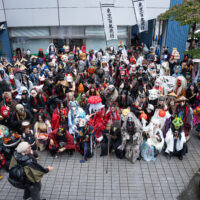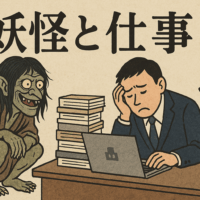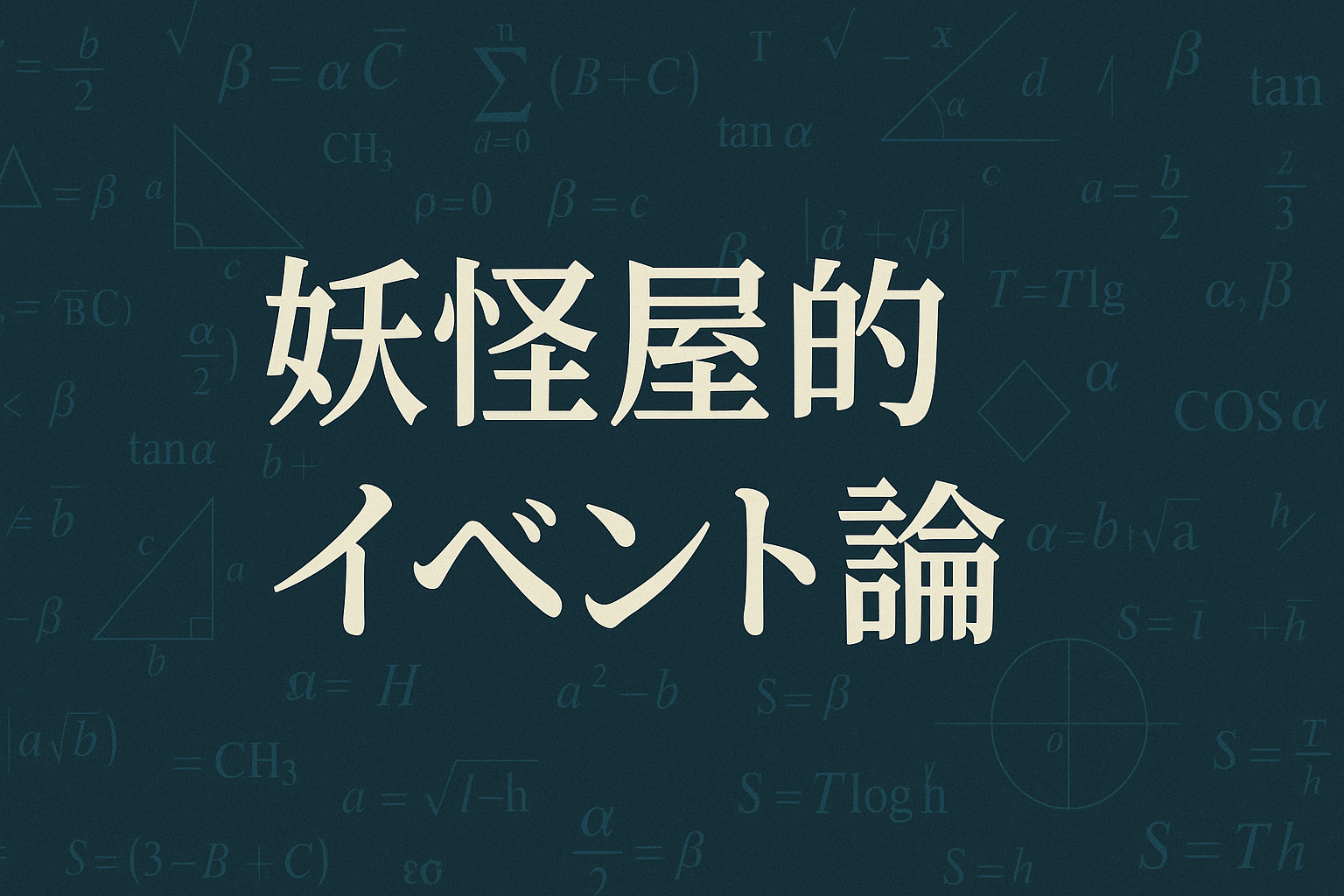
Biwa and Ayakashi
How is everyone spending their yokai life?
Many months have passed and it is now Kannazuki.
It seems that the gods will descend upon the land of Izumo and a meeting will be held!
From the spirit's perspective, it could be said that the time has come for it to stretch its wings a little.
This time too, I, Kotaro the Biwa narrator, will be pouring out all my feelings!!
Now, this time let's talk about "Biwa and Demons."
To begin with, "biwa" is a musical instrument.
It is not that juicy fruit. Rather, it is called loquat because the shape of its seeds resembles the musical instrument biwa.

The biwa is believed to have been introduced to Japan sometime between the 700s and 800s.
Have you ever heard of the Shosoin's "Mother-of-pearl, Rosewood and Mother-of-pearl Biwa"?
In fact, because the biwa has diversified and flourished so much, I sometimes feel that the route it arrived on cannot be explained by academic theory alone.
When I start talking about this, I feel an indescribable resentment.

I have created this diagram as an individual, and I am always open to comments and corrections.
Thus, there are two main systems: "instrumental biwa" such as the Gaku biwa, and "blind monk/blind man biwa" such as the Chikuzen biwa and Satsuma biwa.
So where does the Shosoin "Mother-of-pearl, Purple Sandalwood, Mother-of-pearl Biwa" fit in? No, it doesn't belong here.

The "Mother-of-pearl and Shisanjiki Mother-of-pearl Biwa" in Shosoin is the oldest surviving Indian-style, or Tenjiku-style, imported product. It's a very precious Biwa! It's beautiful, and a real treasure!
If we write down the years they were established, it looks something like this!

There are various theories, and some things that are not included in academic theory, so please use them as a reference only.
Have you gained a deeper understanding of the biwa?
In other words, the reason why the biwas often depicted as monsters in the Edo period are the Raku biwa, the Heike biwa, the blind monks and the blind people's biwa is that the Satsuma biwa was a cultural instrument used by the Satsuma samurai, and was not familiar in Honshu.
Then, with the arrival of the Meiji Restoration, masters of Satsuma traveled to the Kanto region, and Satsuma biwa became known throughout the country.
Furthermore, when Chikuzen biwa began to spread in 1889, masters of the instrument from Yamaguchi and Kitakyushu traveled to Kanto, and this too spread throughout the country.
As I wrote in my previous article, from this time until the time of World War II in the Showa era, many Satsuma and Chikuzen biwas were produced.
That's right! This is the Tsukumogami Biwa Fever.
Of course, some things may be broken or decayed.
However, it's exciting to think that many of them still exist and are resting in a storehouse somewhere!
Now let me tell you two old stories about the biwa and demons.
One is the story of the founding of Enryaku-ji Temple on Mount Hiei, a Tendai Buddhist temple.
The founder of the Gensei school of Tendai Buddhism is called Gensei Hoin. Born in 766 in the suburbs of what is now Dazaifu City, Fukuoka Prefecture, Gensei entered the Buddhist priesthood at a young age, but at the age of 17 he suffered from an eye disease and became blind. He decided to establish a sect for future blind monks, and began playing the biwa, following the example of the Indian monk Anatari, the father of blind monks.
At the age of 20, he had a great awakening, and took his biwa with him to the mountains to undergo rigorous training for 21 days. On the morning of the completion of his wish, he received a revelation that read, "If you wish to achieve your heart's desire, you must quickly climb Mount Hiei, meet a saint, and sincerely help him." Gensei immediately climbed the mountain, and was guided by him to meet Dengyo Daishi Saicho. At the time, Dengyo Daishi was building Ichijo Shikan-in, the predecessor of the Konponchudo.
However, a giant snake appeared and prevented the construction of the temple from being completed. Gensei realized that this was the work of the earth god, so he performed an offering to the god by playing the biwa and chanting the Earth God Dharani Sutra. The god was overjoyed, and the danger of the snake was immediately removed.
Gensei's prayers using the biwa had the power to inspire and connect with people.
From the Tendai Sect websitehttp://www.tendai.or.jp/houwashuu/kiji.php?nid=162
It is the origin of the Tendai sect's Gensei school, which is the origin of the Chikuzen biwa. It is considered an instrument that wards off snakes and evil spirits.
The second is from the Konjaku Monogatari, in which a biwa called Gensho is taken by a demon.
It is now a long time ago, but during the reign of Emperor Murakami, a biwa called Gensho suddenly disappeared. This was a rare heirloom and a valuable Imperial treasure, so the Emperor was deeply saddened by its loss. It is only natural that he would lament, saying, "I can't believe that such a valuable heirloom has been lost in my reign." Could someone have stolen it? However, if it had been stolen, it was an item that could not be kept as one's own, so he suspected that someone with bad intentions toward the Emperor may have stolen it and destroyed it.
At that time, a man named Minamoto Hiromasa was a member of the court. He was a master of the art of music, and was lamenting the loss of Gensho. After everyone had gone to bed, Hiromasa was listening carefully in the Seiryoden Hall when he heard the sound of Gensho being played from the south. He found it very strange, and wondered if he was hearing things, but when he listened carefully, he found that it was indeed the sound of Gensho. Hiromasa could not have mistaken what he heard, so he was shocked and suspicious again and again. Without telling anyone, he left the Emon camp alone, dressed in his formal attire and wearing sandals, accompanied by a small servant, and headed south, where he could still hear the sound coming from the south. He thought it must be nearby, but when he came to the Suzaku Gate, he could still hear the sound coming from the south. So he headed south along Suzaku-oji. Thinking to himself, "This must be someone stealing and secretly playing Gensho," he hurried on and reached the Takadono Hall to listen, where he heard the sound from even further south, very close by. So we went further south and found ourselves at Rajomon Gate.
As he stood under the gate listening, he heard someone playing Gensho on the second floor above the gate. Hakuya was shocked and astonished to hear this, thinking, "This can't be a human being playing. Surely a demon or some other being is playing," and then (as if realizing Hakuya's thoughts) he stopped playing. After a while, he started playing again. At that moment, Hakuya asked, "Who is playing this? Gensho has been missing for the past few days, and the Emperor was searching for him, when tonight he heard this sound coming from the south at Seiryoden. So he came to inquire."
Immediately, he stopped playing and something came down from the ceiling. Terrified, he jumped aside to see, and saw Gensho being lowered on a rope. Hiromasa then cautiously picked it up and returned to the Imperial Palace, where he reported the whole story and presented Gensho to the Emperor. The Emperor was deeply moved and said, "A demon must have taken it." Everyone who heard this praised Hiromasa highly.
That Gensho is still a treasure of the Imperial Court, and is kept in the Imperial Palace as an item handed down from generation to generation. This Gensho is like a living thing. If you play it poorly and are unable to master it, it gets angry and stops making sounds. It also gets angry and stops making sounds if it gets dust on it and you don't wipe it off. Its moods are clearly visible. On one occasion, when there was a fire in the Imperial Palace, Gensho went out on its own and was found in the garden, though no one took it out.
(From the Konjaku Monogatarishu)
This is a story about a demon who was attracted to the biwa. I wonder what kind of biwa the demon played. I'd like to hear it.
The biwa is used to ward off evil, attract demons, be used as a Buddhist instrument, and to tell stories, making it a perfect match for spirits. Although it is an instrument that was introduced from overseas, the Japanese musical instrument "biwa" flourished in Japan.
Maybe he's sleeping beside you.
And maybe that biwa has become a tsukumogami?
Well, that's it for now!
We look forward to seeing you again!
If you would like to consult about biwa, please contact me on Twitter!
(Written by Kotaro, a Biwa Storyteller)
★Introducing Yokai Lover★

Kotaro the Biwa Storyteller
A biwa player playing the Higo Biwa, a nationally designated intangible cultural asset.
Aiming to become a beloved biwa player, I perform in various places in human form and as a yokai "Biwa Tanuki." Please contact me on Twitter for inquiries about performances and performance experiences!
Twitter Biwa Storyteller Kotaro https://twitter.com/biwagatarikota







No comments yet.